The constellation Cassiopeia contains a wealth of deep-sky objects that can be seen through a telescope.
Cassiopeia is a great target for observers because it is a circumpolar constellation, meaning it can always been seen in the night sky.
Its W shape can be seen to do a complete rotation around the North Celestial Pole, approximately marked by Polaris, the North Star.
The constellation is distinctive and almost as easily recognisable as the constellation Orion.
It represents the Seated Queen and the name of star Schedar means ‘breast’, a reference to its position in the heart of the Queen.
Cassiopeia is a great target to observe with the naked eye as it's so prominent, even from a suburban location.
But get out your telescope and explore the constellation and you'll find a wealth of deep-sky objects.
8 deep-sky objects in Cassiopeia
NGC 7789
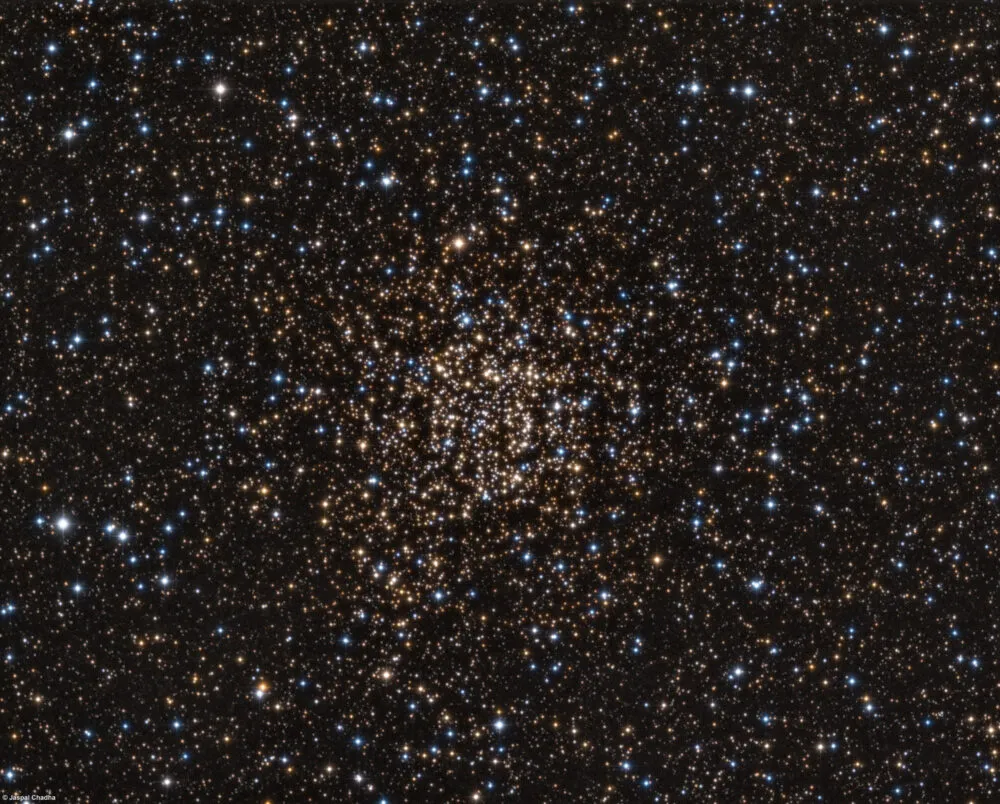
We start with the well-known cluster NGC 7789, also called the White Rose Cluster or more commonly Caroline’s Rose, after discoverer Caroline Herschel.
The Rose is one of the best-known deep-sky objects in Cassiopeia.
It’s located 2.9° southwest of Caph (Beta (β) Cassiopeiae), one of the points forming a right-angled triangle together with Schedar (Alpha (α) Cassiopeiae), Caph being at the right angle.
It has an integrated magnitude of +6.7 and appears around 20 arcminutes across through a 150mm scope with over 50 members resolved.
A 300mm scope resolves around three times as many stars.
The ‘Rose’ gets its name from curving lines of stars which give the impression of petals, clustered around the flower’s centre.
M52/NGC 7635

Our next target is 6.5° northwest of NGC 7789. Locate mag. +4.9 4 Cassiopeiae and 0.7° to the south you’ll find the Salt and Pepper Cluster, M52.
Listed at mag. +6.9, a 150mm scope shows a hazy patch with around 30 individual stars scattered over a 10-arcminute region, a number that triples through a 300mm scope.
While looking at M52, observe the region 0.5° southwest. Here lies NGC 7635, a region of diffuse nebulosity.
A 150mm scope may struggle, but a 250mm scope should show it as a glowing patch around 1 arcminute across.
This is the Bubble Nebula, so-called because of the ring structure visible in long-exposure photographs, representing the edge of a giant bubble blown in the nebula by the star SAO 20575.
NGC 7790
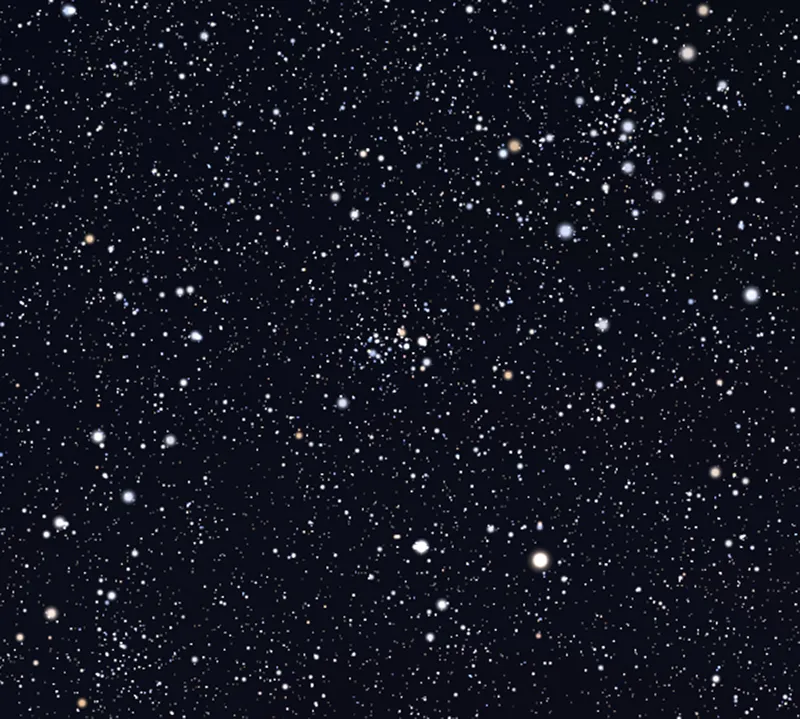
Head 4.5° east from M52 and you’ll arrive at another open cluster, NGC 7790. Alternatively, look 2.5° northwest of Caph.
This cluster is fainter than Caroline’s Rose, with an integrated magnitude of +8.5.
It’s considerably smaller too, a 150mm scope revealing a compact object around 4 arcminutes across.
Under suburban skies, it appears as a hazy glow, giving the impression of a footprint with three 11th-magnitude stars marking some of the toes and a mag. +10.2 one marking the heel.
The northern ‘toe’ is Cepheid variable CF Cassiopeiae.
A 250mm scope resolves around 25 stars in a vaguely rectangular area of 4 x 2 arcminutes.
NGC 129
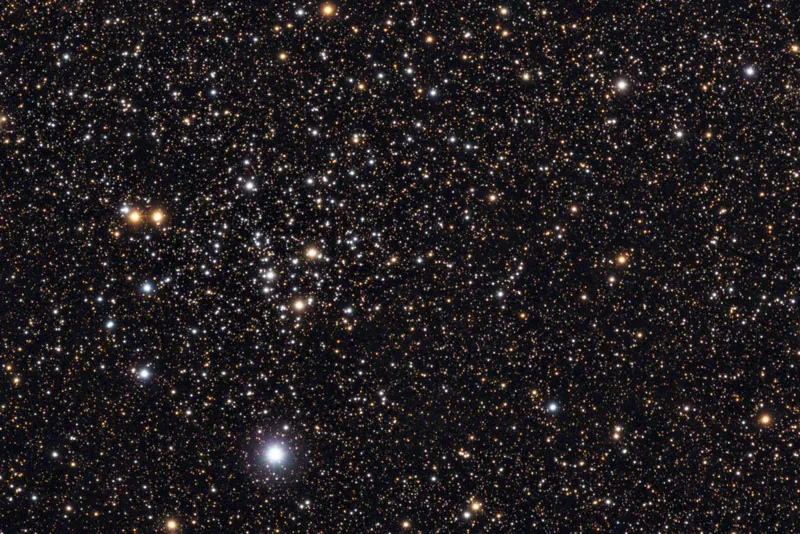
To locate NGC 129, imagine the line between Caph and Gamma (γ) Cassiopeiae, the mag. +6.5 cluster being slightly on the Caph side of the mid-point.
Through smaller instruments, this is tricky to see as it’s pretty sparse, making it one of the more challenging Cassiopeia deep-sky objects.
A pair of red stars (mag. +8.8 HD 236446 and mag. +8.6 HD 236449) slightly further east along the line described point at it, in case you’re having difficulty.
Another pointer is HD 2377 at mag. +5.9, located 0.25° south of the cluster’s centre.
A 300mm scope shows around 50 stars in an area 15 arcminutes across, three 10th-magnitude members forming a distinctive, almost equatorial, triangle in the cluster’s centre.
NGC 189
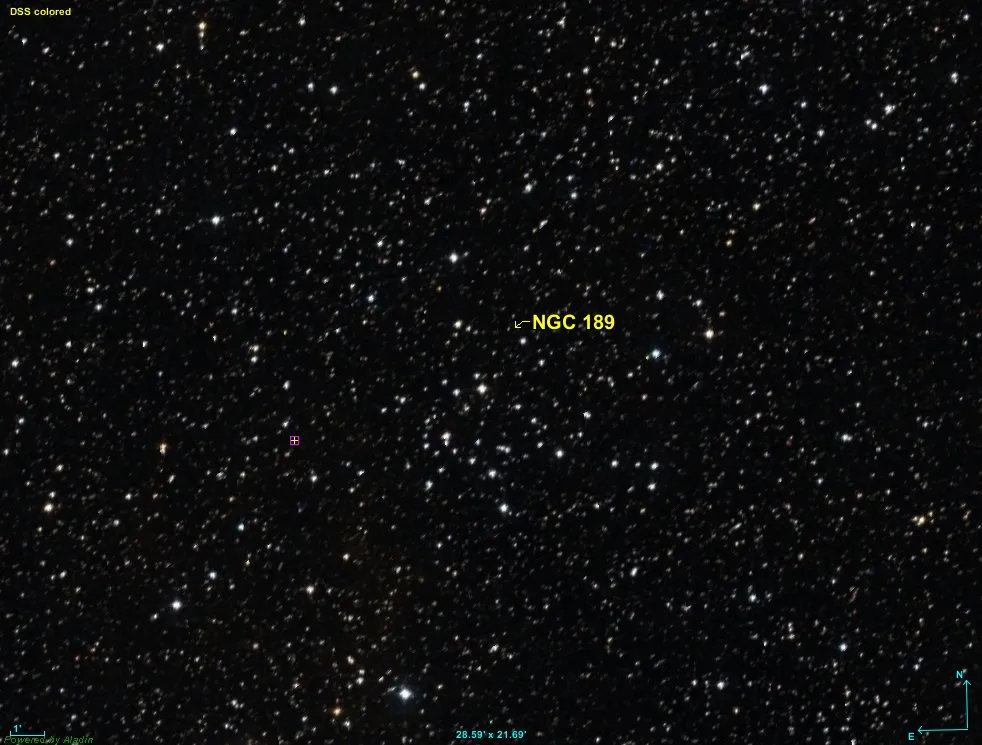
Next up is the tricky cluster NGC 189, which lies 1.5° east-northeast of NGC 129. Alternatively, find it 2.1° west and a fraction north of Gamma Cassiopeiae.
It’s a poorly concentrated object with an integrated magnitude of +8.8.
It’s also relatively small, contained in an area 3.7 arcminutes across. To see it properly be prepared to up the magnification.
There’s a square asterism adjacent to it.
With a bit of imagination, a fifth star forms a pattern with the square, not dissimilar to the ‘house’ asterism that forms most of Cepheus.
Smaller instruments show a haze with a few resolved members, while a 250mm scope shows 20 or so stars in the area.
NGC 281
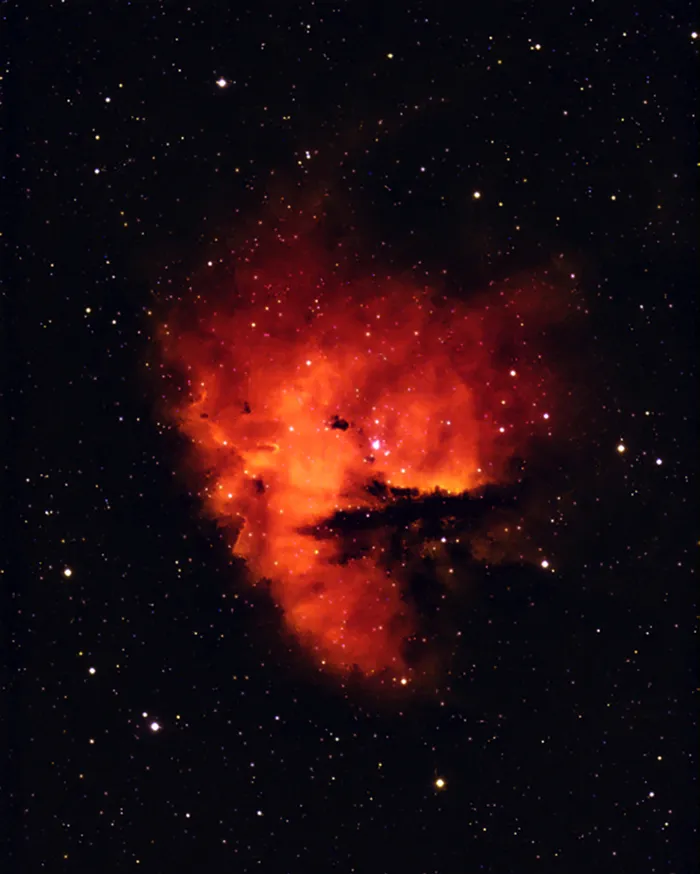
Nebula NGC 281 is 0.5° west and 4.1° south of Gamma Cassiopeiae or, if you prefer, 1.7° east of Schedar.
A 150mm scope shows a nebulous glow around 11 arcminutes across.
Four brighter stars appear within the nebula boundary, along with a scattering of fainter ones.
The middle star is interesting as it splits into several components with powers over 100x.
Long-exposure photos reveal a dark lane crossing the nebula which, together with a small dark patch forming an eye, look like a basic sideways face.
This gives NGC 281 its informal name, the Pacman Nebula.
NGC 185
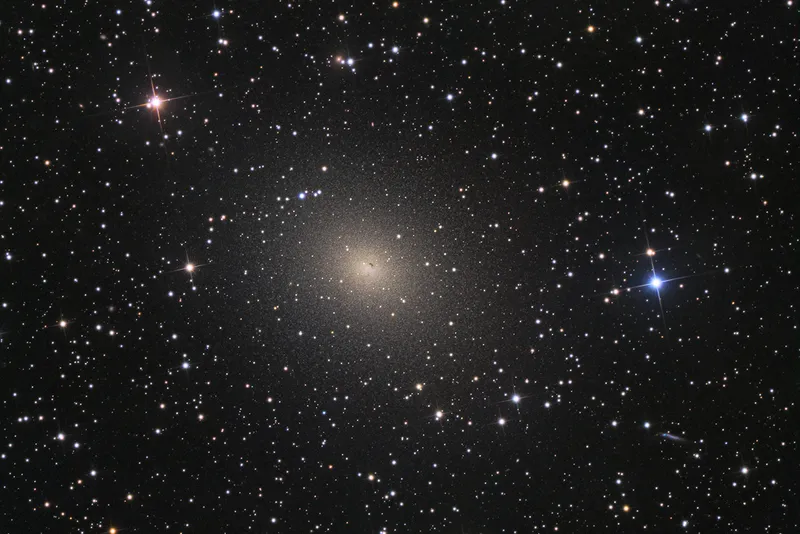
Next is a galaxy 12.4° east and 5.3° north of NGC 7662, within southern Cassiopeia.
An easier route is to look 1° west of mag. +4.5 Omicron (ο) Cassiopeiae.
NGC 185 is a satellite galaxy of M31 and suffers from low surface brightness.
Although listed at mag. +9.2, its large apparent size of 11 x 10 arcminutes spreads its light across a large area.
Having said this, it does have a well-defined core and through a 150mm scope shows as a 1-arcminute circular glow surrounded by an elongated 4-arcminute halo.
Larger apertures reveal distinct granularity in the halo and there appears to be a star-like point at the centre of the core.
NGC 147

Located 1.9° west of Omicron Cassiopeiae or 0.9° west of NGC 185, is NGC 147, a dwarf spheroidal galaxy listed at mag. +9.5.
Don’t let that fool you though; this is a challenging target due to its large overall apparent size, similar to NGC 185: 13 x 8 arcminutes.
Essentially, NGC 147 is a very-low-surface-brightness glow and one of the trickiest of the galactic Cassiopeia deep-sky objects.
It is best suited for larger instruments, but even here you’ll be lucky to see much more than the glow of its core region.
A 300mm instrument under dark-sky conditions will show an elliptical haze 3 x 2 arcminutes in size.
Like NGC 185, this is also a satellite galaxy of M31, the Andromeda Galaxy.
This guide originally appeared in the October and November 2023 issues of BBC Sky at Night Magazine.
